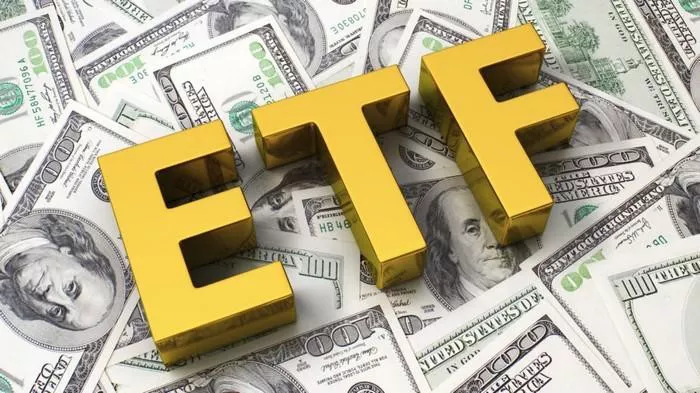Exchange-Traded Funds (ETFs) have garnered significant attention in the world of investment due to their unique blend of features that appeal to both seasoned investors and newcomers alike. ETFs represent a diversified investment option that combines the benefits of mutual funds with the flexibility of individual stock trading. As a result, they have become increasingly popular among investors seeking exposure to various asset classes while maintaining liquidity and cost efficiency.
Structure of ETFs
ETFs typically consist of a basket of assets such as stocks, bonds, or commodities. These assets are selected and managed by the fund manager according to the ETF’s investment objective. One of the key distinguishing features of ETFs is that their shares are traded on stock exchanges, just like individual stocks. This structure allows investors to buy and sell ETF shares throughout the trading day at market-determined prices, providing flexibility and convenience.
Creation and Redemption Process
The creation and redemption process is a unique feature of ETFs that helps ensure their market price remains closely aligned with their net asset value (NAV). Authorized participants, which are usually large financial institutions, play a crucial role in this process. These participants can create or redeem ETF shares directly with the ETF issuer by exchanging a basket of underlying assets for ETF shares (creation) or vice versa (redemption). This mechanism helps to keep the supply and demand of ETF shares in balance and prevents significant deviations between the ETF’s market price and its intrinsic value.
Market Performance Tracking
ETFs track the performance of their underlying assets through various methods. Most ETFs aim to replicate the performance of a specific index, such as the S&P 500 or the NASDAQ-100. These ETFs are known as index ETFs and typically hold a portfolio of securities that mirror the composition of the index they track. However, some ETFs may employ other strategies, such as active management or thematic investing, to achieve their investment objectives.
Diversification Benefits
One of the primary advantages of investing in ETFs is the instant diversification they offer. Since ETFs typically hold a diversified portfolio of assets, investors can achieve broad exposure to various sectors, industries, or geographic regions through a single investment. This diversification helps to reduce the overall risk of the investment portfolio by spreading exposure across different asset classes and minimizing the impact of any individual security’s performance on the portfolio as a whole.
Liquidity and Trading
ETFs provide investors with liquidity and trading advantages that are not typically available with traditional mutual funds. Unlike mutual funds, which are only traded at the end of the trading day at their net asset value (NAV), ETFs can be bought and sold throughout the trading day on stock exchanges at market prices. This liquidity and flexibility allow investors to react quickly to market developments and adjust their investment positions as needed, without having to wait for the end of the trading day.
Cost Considerations
Cost efficiency is another key benefit of investing in ETFs. ETFs often have lower expense ratios compared to mutual funds, primarily due to their passive management style and lower operating expenses. Additionally, since ETFs are traded on stock exchanges, investors may incur brokerage commissions when buying or selling ETF shares, but these costs are typically lower compared to the sales loads or redemption fees associated with mutual funds.
Tax Efficiency
ETFs are known for their tax efficiency, which can provide additional advantages to investors, especially in taxable accounts. Unlike mutual funds, which may incur capital gains taxes when the fund manager sells securities within the portfolio, ETFs typically have lower capital gains distributions. This is due to the unique structure of ETFs and the in-kind creation and redemption process, which minimize the need for the ETF to sell securities and realize capital gains.
Types of ETFs
There are several types of ETFs available to investors, each catering to different investment goals, risk tolerances, and asset allocation strategies. Some common types of ETFs include:
1. Equity ETFs: These ETFs invest in a diversified portfolio of stocks, providing exposure to a specific market segment, industry, or geographic region.
2. Bond ETFs: Bond ETFs hold a portfolio of bonds, providing investors with exposure to fixed income securities with varying maturities, credit qualities, and yields.
3. Sector ETFs: Sector ETFs focus on specific sectors or industries of the economy, allowing investors to target their investments in areas such as technology, healthcare, or energy.
4. International ETFs: International ETFs invest in securities issued by companies located outside of the investor’s home country, providing exposure to global markets and diversification beyond domestic stocks and bonds.
Risks and Considerations
While ETFs offer many benefits, it’s essential for investors to be aware of the risks and considerations associated with these investment vehicles:
1. Market Risk: Like all investments, ETFs are subject to market risk, which means that the value of the ETF’s underlying assets may fluctuate in response to changes in market conditions.
2. Liquidity Risk: While ETFs are generally liquid investments, there may be instances where trading volumes are low, leading to wider bid-ask spreads and potentially reduced liquidity.
3. Tracking Error: Some ETFs may not perfectly track the performance of their underlying index due to factors such as expenses, trading costs, or market disruptions, resulting in tracking error.
4. Concentration Risk: Certain ETFs may be heavily weighted in specific sectors, industries, or regions, which can expose investors to concentration risk if those areas experience adverse developments.
Concluison
In conclusion, investing in ETFs can be an effective way to gain diversified exposure to various asset classes while benefiting from liquidity, cost efficiency, and tax advantages. However, investors should carefully consider the risks and conduct thorough research before incorporating ETFs into their investment portfolios. By understanding how ETFs work and their unique features, investors can make informed decisions that align with their financial goals and risk preferences.


